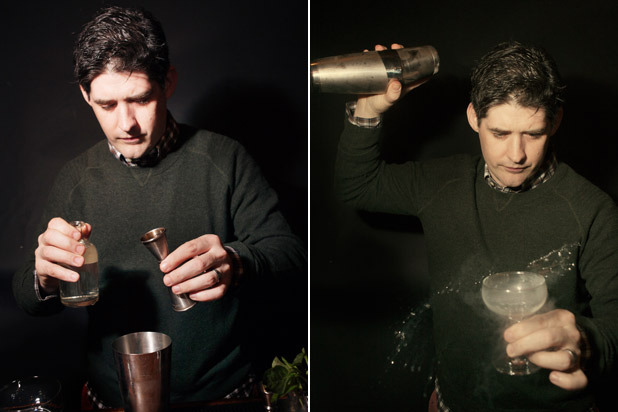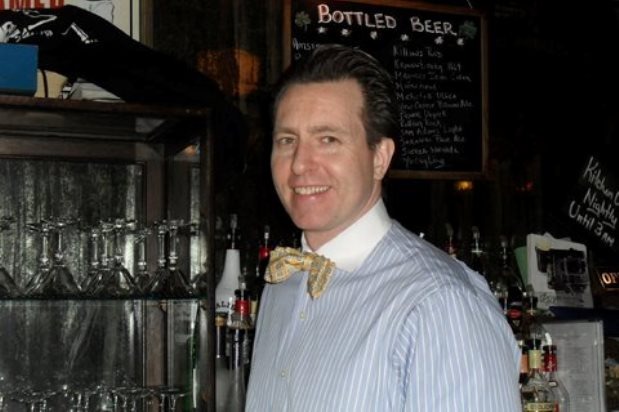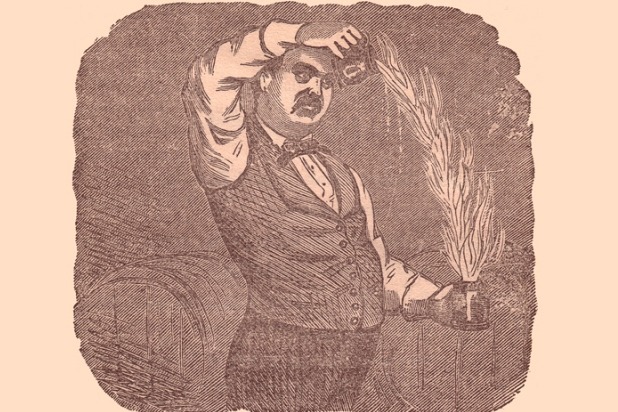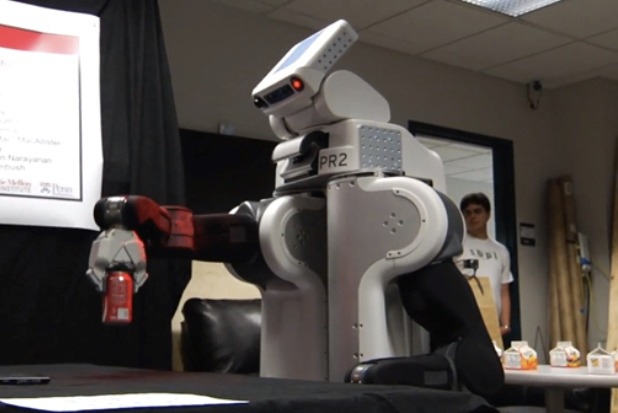10 Influential Bartenders From The Past, Present, And Future Slideshow
As we've said in our profile of Dave Arnold as one of drink's 60 coolest people (obviously), Arnold has brought modernist techniques to the forefront of mixology. As the owner of Booker & Dax, Arnold has influenced scores of modernist chefs, including Grant Achatz, Ferran Adrià, and José Andrés, to set the bar higher for cocktails. Still, for him it's more about the taste than the glitz. As he said to Eatocracy, "Booker & Dax is about creating drinks, using any technique possible, but always focusing on making things more delicious, and avoiding at all costs gimmicks that are just there for visual effects... one of the most important things about the bar isn't even the technology, it's the fact that we're focusing on making the drinks as best as we can."
Dale DeGroff
He's called the "King Cocktail," and should anyone be surprised by his royal title? DeGroff is largely responsible for the wave of craft cocktails that has been going strong for nearly the past decade, although he's been behind the bar since 1975. It was his bar program at the Rainbow Room in Manhattan, which used fresh ingredients and house-made syrups, that changed the cocktail game.
Ernest 'Don the Beachcomber' Gantt
If you love tiki cocktails, it's all because of "Don the Beachcomber." After working odd jobs during the Depression, Gantt ended up in Hollywood, where he built the Don the Beachcomber bar in 1934. Mixing up sweet, tropical rum drinks, Gantt had a simple philosophy to his bar and cocktails: "If you can't get to paradise, I'll bring it to you." It's been said that Trader Vic's founder Victor Bergeron soon followed his lead and instituted tiki drinks at his Oakland, Calif., location, but the Beachcomber lasted for eight solid decades and expanded into 16 locations. Gantt (who renamed himself "Donn Beach") eventually retired to Hawaii, which is only appropriate, we think. If you've ever had a Zombie or a tropical drink, it's likely thanks to "Don the Beachcomber."
Doug Quinn
Doug Quinn is who you might call the most celebrated bartender in New York City. His reign at P.J. Clarke's ended abruptly, which caused pandemonium among customers and cocktail lovers alike. But the man who's been called "the bartender of your dreams" will be back at it soon enough, as he's told Grub Street about his plans for a new bar. Quinn is a throwback to an era of cocktails not seen much today; he's said it's easier to bartend when wearing a bow tie (naturally) and he has his own "Quinn's Laws" for bar-goers. Those include a no-cellphone clause and a plea for decorum and class. After all, he's said, a bar is where you go to experience the out-of-the-ordinary. "Being a great bartender is not about making drinks," he said to Esquire in 2007. "It's really about creating magic, you know?"
Harry Craddock
You can thank Harry Craddock for the dry martinis you love — and just about any other Golden Age cocktail you enjoy. Craddock was an American expat who brought the cocktail scene to London (it's said that he mixed the last pre-Prohibition cocktail in the U.S., before fleeing to London), and wrote the cocktail book that is still the gold standard for mixology. The Savoy Cocktail Book, named for the American Bar at the Savoy Hotel, was originally published in 1930. It's been adapted for modern times as recently as 2007, reinventing the classic cocktails for today's drinkers. How else has Craddock left behind his mark? Supposedly, he even buried a shaker containing a Craddock-original recipe, in the wall at the American Bar during his tenure; although the bar has had several renovations, the shaker has never been found.
Jerry Thomas
It's been said that "Professor" Jerry Thomas was the one who made bartending into what it is today: a skill to master and perform. Consider his most popular and talked-about cocktail recipe from his Bartender's Guide, published in 1887, the Blue Blazer: a flaming drink of whiskey, sugar, and lemon peel thrown back and forth between two glasses. The original flaming drink! But beyond the cocktails, Thomas was the founder of flair bartending, and the author of the first modern cocktail book in the U.S. Thomas paved the way for Dale DeGroff, Jim Meehan, and other noted bartenders' road to fame.
Robot Bartender
Yeah, we're kidding. But still, the fact that bartenders are now turning into robots... well, we can only hope this isn't the future of mixology.
Valentine Goesaert
She may not be a name you recognize, but any female behind the bar owes her quite a few drinks in return for her work. Goesaert is one of the first-recorded female bartenders on the books, when "Bessie the Bartender" took over tending bar during World War II. In 1945, when a woman tending the bar was illegal in Michigan, Valentine Goesaert and her daughter, Margaret, joined a group of other women in challenging the state law, all the way to the Supreme Court. With it, as the book The Boundaries of the Body: The Troubling History of Women's Rights in America notes, the women were taking on the "unchivalrous desire [of] male bartenders" to keep the bar to themselves. Sadly, the Supreme Court ruled against Goesaert in Goesaert v. Cleary Liquor Control of Michigan, and laws banning women from behind the bar, nationwide, weren't overturned until the 1960s and '70s. Still, the challenge by Goesaert brought a new level of attention to the fight to allow women behind the bar. After all, where would the Julie Reiners and Audrey Sanders be without those first women bartenders?







